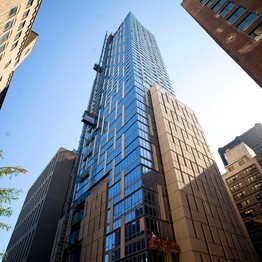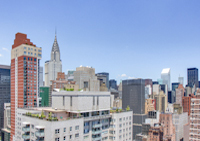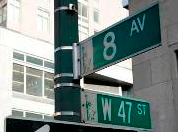 In the Manhattan rental market in 2011, demand for rental apartments far outstripped supply. Both developers and lenders recognized that this pent-up demand made for ideal building conditions, which is why $2.9 billion worth of new residential projects began in New York City in 2011. That’s a 24% increase from 2010 according to data released by the New York Building Congress. Additionally, Manhattan’s slew of stalled construction sites - land controlled by developers who have obtained all the necessary construction permits yet have still halted work - has finally begun to shrink. According to the New York City Department of Buildings, Manhattan had 130 stalled construction sites at this time last year, and now that number has fallen to 114. Furthermore, the number of demolition permits issued in Manhattan rose from 2010 to 2011, so more developers are waiting to break ground. So all this new construction should alleviate demand in the near future, right? Not exactly. While this is undoubtedly a step in the right direction, it still falls well short of the kind of progress that would help bring down rental prices in Manhattan. If there’s a lesson to be learned from 2011, it’s that even rising inventory won’t slow down the Manhattan rental market, so we at Luxury Rentals Manhattan don’t expect rents to begin to fall in 2012.
In the Manhattan rental market in 2011, demand for rental apartments far outstripped supply. Both developers and lenders recognized that this pent-up demand made for ideal building conditions, which is why $2.9 billion worth of new residential projects began in New York City in 2011. That’s a 24% increase from 2010 according to data released by the New York Building Congress. Additionally, Manhattan’s slew of stalled construction sites - land controlled by developers who have obtained all the necessary construction permits yet have still halted work - has finally begun to shrink. According to the New York City Department of Buildings, Manhattan had 130 stalled construction sites at this time last year, and now that number has fallen to 114. Furthermore, the number of demolition permits issued in Manhattan rose from 2010 to 2011, so more developers are waiting to break ground. So all this new construction should alleviate demand in the near future, right? Not exactly. While this is undoubtedly a step in the right direction, it still falls well short of the kind of progress that would help bring down rental prices in Manhattan. If there’s a lesson to be learned from 2011, it’s that even rising inventory won’t slow down the Manhattan rental market, so we at Luxury Rentals Manhattan don’t expect rents to begin to fall in 2012.
If you were to take all of the residential projects that were approved last year in New York City (both sales and rentals), you would find that about 10,000 new residential units are on the way. This is significant progress, but Manhattan alone could use 10,000 new rental units in order to satisfy demand. Vishaan Chakrabarti, the director of the Center for Urban Real Estate at Columbia University, told the Wall Street Journal that this number is only about half of what is needed to meet new demand in New York City, and demand for rental apartments is higher in Manhattan than in NYC as a whole. New construction isn’t the only way to increase inventory either. Many high-end developments are electing to switch from sales to rentals in order to capitalize upon the strength of the rental market, as are many condo-owners who are having trouble selling their apartments and becoming first-time landlords instead. Overall inventory for rental apartments in Manhattan increased by 2.5% last year due to these changes.
What’s interesting is that this increase in inventory has done nothing to alleviate demand. Just look at the numbers from 2011: The median asking rent rose 6.6% from 2010 to 2011 and landlord concessions fell from 40.5% to 7.4% during that time. Even with more rental apartments on the market, demand is still so high that landlords’ don’t have to offer concessions; vacant Manhattan apartments only stayed on the market for 37 days on average in 2011, down from an average of 44 days in 2010. This is partly explained by the perpetual demand of newcomers to the city, but the larger group of renters are would-be buyers who have to rent for the time being. This points to the paradox at the heart of the story: The strength of the high-end rental market in Manhattan is an outgrowth of the poor national economy and the uncertainty about the future of the world economy. The uncertainty of both the national and world economies have made the credit market for would-be condo buyers in Manhattan extremely strict, forcing even well-qualified mortgage candidates into the rental market instead. So as long as the credit market is uneasy, people will continue to lease and demand will continue to stay high.
Nonetheless, a few new projects are in the works that will offer high-end luxury apartments and help relieve at least a bit of this demand. Gotham West is a massive new development in Clinton that began construction this year and is due to open in 2014; it will feature about 1,200 new luxury rental units. Further uptown on the border of East Harlem and the Upper East Side, 4 East 102nd Street will be a 43-story glass high-rise on the Mount Sinai Hospital campus that will house practice areas for Mount Sinai faculty on the bottom floors and 248 luxury rental apartments on its upper floors. This buildings are a sure sign of similar projects to come, because lenders are becoming more willing to finance large projects knowing that the demand to live in those projects is so high, making them all but assured to lease quickly.





